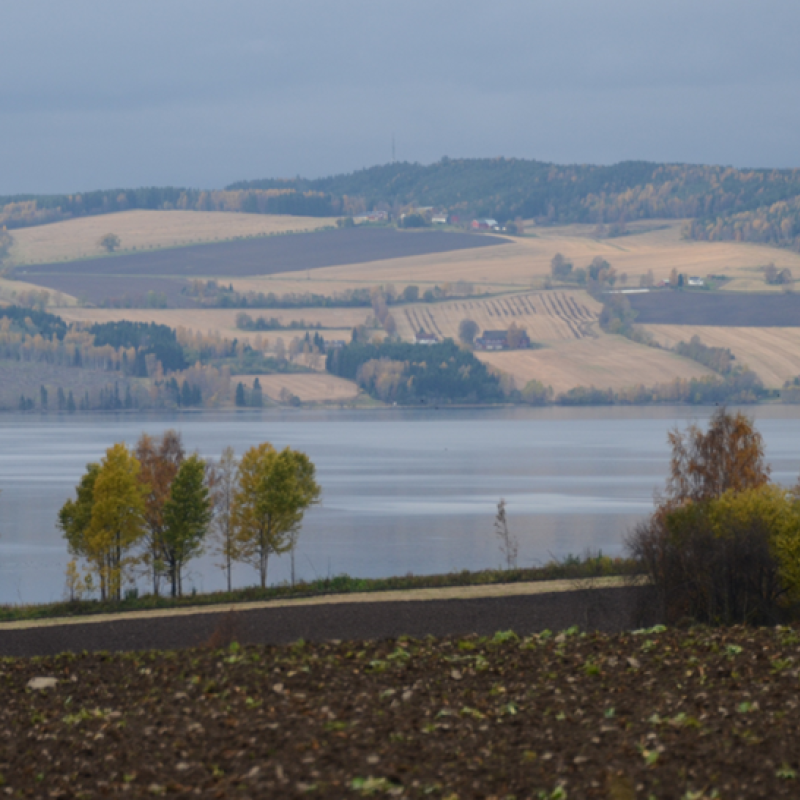Csilla Farkas
Seniorforsker
(+47) 948 14 727
csilla.farkas@nibio.no
Sted
Ås - Bygg O43
Besøksadresse
Oluf Thesens vei 43, 1433 Ås (Varelevering: Elizabeth Stephansens vei 21)
Forfattere
Mikołaj Piniewski Natalja Čerkasova Svajunas Plunge Michael Strauch Christoph Schürz Péter Braun Enrico Antonio Chiaradia Joana Eichenberger Mohammad Reza Eini Csilla Farkas Marie Anne Eurie Forio Peter Goethals Piroska Kassai Štěpán Marval Diego G. Panique-Casso Lorenzo Sanguanini Moritz Shore Brigitta Szabó Petr Slavík Felix WitingSammendrag
This study proposes a new workflow for crop growth evaluation and yield calibration in the Soil and Water Assessment Tool Plus (SWAT+) model and evaluates its impact on simulated hydrological and biogeochemical processes. The workflow was applied for ten small agricultural catchments in Europe. A detailed demonstration is provided for the German catchment, Schwarzer Schöps. The workflow proved effective across all catchments, improving yield calibration from an initial R2 of 0.5–0.84. The results show that evapotranspiration and soil moisture were only moderately affected by crop calibration in three catchments (Belgium, Czech Republic and Norway) and negligibly changed in the remaining ones. Sediment and nutrient balance were affected more strongly: sediment, nitrogen and phosphorus loss change reached 82 % (Norway), 16 % and 20 % (Czech Republic), respectively. The proposed workflow is a valuable tool for improving the accuracy of SWAT + simulations and can be used to support decision-making in environmental management.
Sammendrag
SWAT+ modelling and scenario results for changes in nitrate leaching to shallow groundwater in the Himmerland catchment, Denmark, with afforestation, set aside and fertilization reduction. Results are calculated for present and future climate conditions.
Forfattere
Jonas Schmidinger Sebastian Vogel Viacheslav Barkov Anh-Duy Pham Robin Gebbers Hamed Tavakoli Jose Correa Tiago R. Tavares Patrick Filippi Edward J. Jones Vojtech Lukas Eric Boenecke Joerg Ruehlmann Ingmar Schroeter Eckart Kramer Stefan Paetzold Masakazu Kodaira Alexandre M.J.-C. Wadoux Luca Bragazza Konrad Metzger Jingyi Huang Domingos S.M. Valente Jose L. Safanelli Eduardo L. Bottega Ricardo S.D. Dalmolin Csilla Farkas Alexander Steiger Taciara Z. Horst Leonardo Ramirez-Lopez Thomas Scholten Felix Stumpf Pablo Rosso Marcelo M. Costa Rodrigo S. Zandonadi Johanna Wetterlind Martin AtzmuellerSammendrag
Det er ikke registrert sammendrag

Divisjon for miljø og naturressurser
MARCHES - Methodologies for Assessing the Real Costs to Health of Environmental Stressors

Divisjon for miljø og naturressurser
NORDBALT ECOSAFE: Nitrogen and phosphorus load reduction approach within safe ecological boundaries for the Nordic Baltic region
About the project

Divisjon for miljø og naturressurser
ENGAGE: Europe Nutrient Management - Guided Approaches for Greater Export reduction
ENGAGE aims to operationalise a novel vision for the future of multi-scale nutrientexport reduction and associated ecosystem services in national andtransboundary/international river basins in Europe by bringing together robuststakeholder engagement strategies with coupled state-of-the-art computationalhydrology techniques and online interactive use-tailored DS tool approaches that integrate remote sensing, socio-economic, governance, and society-change decisionelements.

Divisjon for miljø og naturressurser
Hydrologiske strategier for optimalisering av funksjonen til fangdammer i et endret klima
Fangdammer er kjent som effektive tiltak for å redusere forurensning og forbedre vannkvalitet i jordbruksbekker.

Divisjon for matproduksjon og samfunn
Agricultural mitigation measures and the value of water quality improvements
Agriculture is one of the main sources of water pollution in Norway, and an important contributor to GHG emissions.

Divisjon for matproduksjon og samfunn
Tiltak i landbruket og verdien av forbedret vannkvalitet
Landbruket er en av de viktigste kildene til vannforurensing i Norge, og samtidig en stor bidragsyter til klimautslipp.
